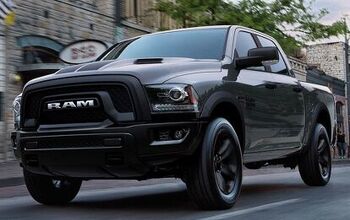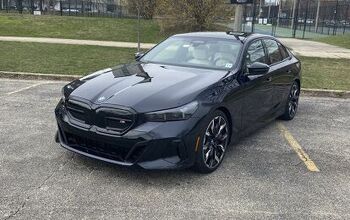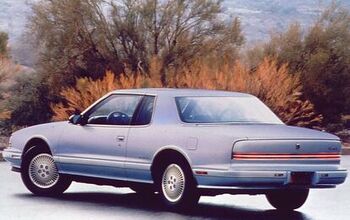Lutz Back At GM, Check Out TTAC's Exclusive Interview With Him Next Week
The original car czar is headed back at General Motors, as the company announced today that it was officially retaining former Vice Chairman Bob Lutz as a Senior Advisor. The General’s press release notes
Lutz will be available to executives on a part-time consultancy basis effective immediately. He brings a wealth of experience built over the course of more than 40 years in the industry, including two stints at GM. He has also been a senior executive at Ford, Chrysler, BMW and was CEO of Exide Batteries.
Lutz has been providing advice to GM executives informally since retiring from the company in 2010.
I spent nearly three hours with Lutz last week, and he never mentioned a possible return to GM. He did, however, discuss his entire career, his experiences at Chrysler and GM, his product development philosophy and much, much more. You can read all about it starting on Tuesday, when we begin to publish content based on our interview.
More by Edward Niedermeyer

































Comments
Join the conversation
Let's get some specifics from Lutz! Namely, exactly what needs to be changed. My beater is a '94 Olds Cutlass Cierra V6. It's comfortable, reliable, gets good mileage, and I got it cheap. But my God, how the hell did GM sign off on things like the idiotic "automatic seat belts" that are unsafe simply because they discourage use; headliners that would cling to the roof better if made from Post-It notes; or the Rule Goldberg-ish combination turn signal/wipers/lights/cruise lever. Non compos mentis! Did Lutz's book say anything about such blunders and the organization/incompetence that produced them?
Are you going to have a contest of questions from TTAC readers? Might I suggest... "Bob, not counting the comment about Pontiac being damaged goods, what was the stupidest thing that you said during your last 10 years at the General?"
If I recall, one reason for the downfall of Detroit was the good-ol'-boy club management. With the return of Lutz, does that mean GM will once again concentrate on mediocre oversized brand engineered trucks ? As a taxpayer, shall look forward (once again) to bailing out a fat corporation that gives golden parachutes to executives that can afford personal fighter jets?
The "good-ol'-boy" myth of American business is alive and well! Lutz got nothing when he left GM. There were no golden parachutes for any of the executives. Wagoner lost $14M of his $24M accrued retirement benefits and gets a whopping $74,000/year in pension. The Japanese, German and Korean systems are far more in line with the good-ol'-boy stereotype than the America, but you believe what the sideline chattering class, the journalists report. The "downfall" of Detroit was the result of three primary factors: 1- The UAW union monopoly of the industry gave them the power to impose unsustainable labor costs, particularly retirement benefits. GM alone was spending $8B right off the bottom line for UAW retiree health care on top of nearly $1B in cost for the Jobs bank. They had to make about $9B in profit to offset these costs before generating any net profit. Ford and Chrysler were under similar, though smaller burdens. 2- CAFE requirements virtually banned the larger cars that Americans wanted to the great financial detriment of the American companies uniquely. They were forced by the UAW and Government policy to build small cars at a loss in order to sell profitable, larger cars. GM's Small Car Group was losing an average of $1,600 per car on production volume of 1.6M - over $2.5B/year. 3- Global competition. The Detroit 3 could not stop the Japanese (and now the Koreans) from making good products in lower cost foreign locations with government manipulated currency advantages to boot. GM commands the highest transaction prices of any full line maker, largely thanks to those "oversized" trucks you cite. GM's large SUV and full size pickup platform production volume is over double that of second place Toyota (Lexus RX 330; Toyota Avalon, Camry, Camry Hybrid, Sienna, Venza), as well as third place Ford (F150,Lincoln Mark LT). This is very profitable business and GM is capturing a huge share of it. No one is making much if any money on small cars even today.